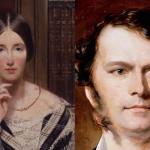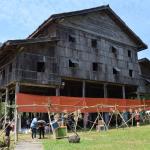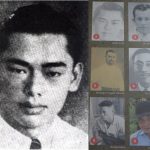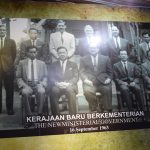When you step into the Sabah Museum, the first thing that greets you is a gigantic whale skeleton.
What type of whale is it? Where did they get it from? Are there alot of whale sightings off the coast of Sabah? Perhaps these are the questions that come to your mind as you look at this enormous skeleton.

Here at KajoMag, we summarised 10 things you should know about the Bryde’s whale skeleton at Sabah Museum:
1. This whale was first found stranded on Dec 14, 2006.
On that day, a group of fishermen found this cetacean stranded near Kampung (village) Lok Urai, Gaya island around 11pm.
Within 12 hours after it was first spotted, a rescue mission was launched by teams from the Fisheries Department, Wildlife Department, Sabah Parks, Universiti Malaysia Sabah (UMS), NGOs and members of the public.
However, the tide was too low for the rescue team to pull the poor creature back to the ocean. Rescuers had to constantly pour seawater on its body to keep it hydrated.
2. The whale was back to the sea the next day.
By Dec 15 at 7.30pm, the team had succeeded in pulling the whale back into the sea. Nonetheless, the then Sabah Fishery Department director, Rayner Stuel Galid raised concerns that the whale might return to its stranding spot.

3. The marine mammal was found dead on Dec 17, 2006.
True enough, the animal was found dead near its stranding spot at Gaya Island. The initial plan was to bury it but there was no suitable location.

4. Its supposedly final resting place was decided.
The carcass was towed to Stomai Rock, somewhere between Pulau Tiga and Gaya Island. Then, it was anchored about 60 to 70m deep into the sea to allow it to decompose naturally.
5. The then Sabah chief minister wanted the whale to be preserved.
Later on Dec 19, then chief minister of Sabah, Musa Aman instructed the Fisheries Department to work together with Sabah Museum Department, Sabah Parks and UMS to conserve the whale’s bones.
6. The whale was back on land on Dec 20.
A team was deployed to bring back the carcass from where it was anchored. They put a giant fishing net to wrap the carcass so that the skeleton remained intact during the process.

7. The ‘deboning’ process begins on Dec 21.
The tedious process of separating the bones from the carcass lasted a few days.
It took about 35 people to work round the clock on the carcass starting from its tail. They also dug three enormous holes at Fishery Station Menggatal to bury the whale’s flesh and organs.
8. The whale skeleton was handed to Sabah Museum on Christmas eve 2006.
The team officially handed the whale skeleton to Sabah Museum on Dec 24, just 10 days after it first found stranded.

9. The identity of the whale is Bryde’s whale.
The whale was identified as Bryde’s whale (Balaenoptera edeni). It was 20.6m long and weighed around 22 to 26 tonnes.
The Kadazandusun people of Sabah call it luulumbo.
According to UMS researchers, approximately 20 species of marine mammals have been recorded in Sabah waters.
The state’s various ecosystems like its coral reefs, mangrove, estuaries and sea grass provides habitats and food resources for these animals, leading to a high number of species found in Sabah.
10. Sabah has the highest number of whale stranding cases in Malaysia.
The Bryde’s whale at Sabah Museum was not the only stranded cetacean in the state.
In 2012, it was reported Sabah recorded the highest number of whale stranding cases as well as whale sightings compared to other states since the 1970s.
Additionally, Sabah also has the longest coastline in Malaysia. It is surrounded by the South China Sea on the west, Sulu Sea on the northeast and Celebes Sea on the southeast regions.
There are many factors that could contribute to whale stranding such as natural causes due to sickness or old age or military sonar.
However, the reason for this statistic in Sabah is still not scientifically known.

































































![[Standing] Dr Teh Su Thye, Chief Executive Officer of Global Peace Foundation explaining the usage and maintenance of the water filter provided by Breeze and Global Peace Foundation to the community at the training.](http://kajomag.com/wp-content/uploads/2017/05/Breeze-GPF-Dr-Teh-Su-Thye-2.jpg)
![[Middle, seventh from left] Dr Teh Su Thye, Chief Executive Officer of Global Peace Foundation on behalf of Breeze, presenting the LifeStraw® water filter to the villagers in Sabah.](http://kajomag.com/wp-content/uploads/2017/05/Breeze-GPF-Dr-Teh-Su-Thye.jpg)



